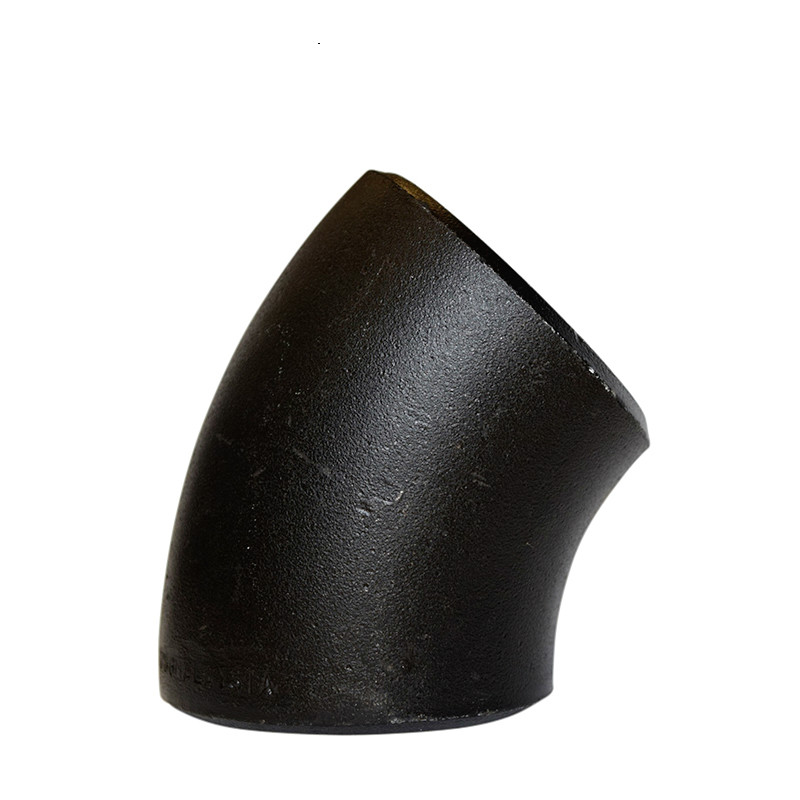
Standard Specification for Buttweld 45 Degree Pipe Elbow: Ensuring Precision and Flexibility in Piping Systems
Introduction
In the realm of piping systems, precision and flexibility are paramount. When it comes to changing the direction of flow, buttweld 45 degree pipe elbows are vital components. These pipe elbows provide a smooth and efficient transition, allowing for seamless flow redirection. In this article, we will explore the standard specification for buttweld 45 degree pipe elbows, delving into their features, benefits, applications, and considerations. Understanding the importance of adhering to industry standards ensures the optimal performance and longevity of piping systems.
Understanding Buttweld 45 Degree Pipe Elbows
Composition and Properties
Buttweld 45 degree pipe elbows are typically made from various materials, including carbon steel, stainless steel, and alloy steel. These materials offer different levels of strength, corrosion resistance, and durability, catering to a wide range of applications. The choice of material depends on factors such as the nature of the fluid or gas being transported, operating temperature, and pressure requirements.
The properties of buttweld 45 degree pipe elbows are defined by industry standards, such as ASTM A234, ASTM A403, and ASTM A420. These standards specify the chemical composition, mechanical properties, and dimensional tolerances to ensure the quality and reliability of the pipe elbows.
Standard Specification
The standard specification for buttweld 45 degree pipe elbows provides guidelines for their manufacturing and usage. Some key aspects covered in the specification include:
-
Dimensions: The specification defines the dimensions of the pipe elbows, including the outside diameter, wall thickness, and center-to-end dimensions. These dimensions ensure compatibility and proper fitment with the piping system.
-
Material Requirements: The specification outlines the acceptable materials and their corresponding grades for buttweld 45 degree pipe elbows. It specifies the chemical composition, mechanical properties, and heat treatment requirements to ensure the desired performance and longevity.
-
Manufacturing Process: The specification details the manufacturing process, including the methods of forming, heat treatment, and finishing. It also provides guidelines for the inspection and testing of the pipe elbows to ensure compliance with quality standards.
-
Marking and Packaging: The specification specifies the marking requirements, such as the manufacturer’s name or logo, material grade, and size. It also outlines the packaging and storage recommendations to prevent damage during transportation and storage.
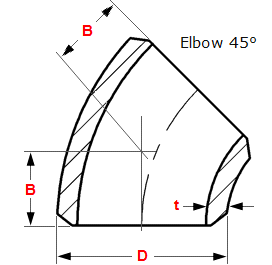
Technical Parameters
| Nominal | External | Center to end | Thickness | Kg |
| 1/2″ | 21 | 16 | 2.77 | 0.04 |
| 3/4″ | 27 | 19 | 2.87 | 0.04 |
| 1″ | 33 | 22 | 3.38 | 0.08 |
| 1 1/4″ | 42 | 25 | 3.56 | 0.12 |
| 1 1/2″ | 48 | 29 | 3.68 | 0.18 |
| 2″ | 60 | 35 | 3.91 | 0.32 |
| 2 1/2″ | 73 | 44 | 5.16 | 0.64 |
| 3″ | 89 | 51 | 5.49 | 1.02 |
| 3 1/2″ | 102 | 57 | 5.74 | 1.43 |
| 4″ | 114 | 64 | 6.02 | 1.95 |
| 5″ | 141 | 79 | 6.55 | 3.25 |
| 6″ | 168 | 95 | 7.11 | 5.1 |
| 8″ | 219 | 127 | 8.18 | 11.15 |
| 10″ | 273 | 159 | 9.27 | 20.5 |
| 12″ | 324 | 190 | 9.52 | 27 |
| 14″ | 356 | 222 | 9.52 | 34 |
| 16″ | 406 | 254 | 9.52 | 48 |
| 18″ | 457 | 286 | 9.52 | 60 |
| 20″ | 508 | 318 | 9.52 | 71.2 |
| 22″ | 559 | 343 | 9.52 | 89 |
| 24″ | 610 | 381 | 9.52 | 102.95 |
| 26″ | 660 | 406 | 9.52 | 124.9 |
| 28″ | 711 | 438 | 9.52 | 150 |
| 30″ | 762 | 470 | 9.52 | 167 |
| 32″ | 813 | 502 | 9.52 | 191 |
| 34″ | 864 | 533 | 9.53 | 215 |
| 36″ | 914 | 565 | 9.52 | 241 |
| 38″ | 965 | 600 | 9.52 | 272 |
| 40″ | 1016 | 632 | 9.52 | 290 |
| 42″ | 1067 | 660 | 9.52 | 327 |
| 44″ | 1118 | 695 | 9.52 | 363 |
| 46″ | 1168 | 727 | 9.52 | 408 |
| 48″ | 1219 | 759 | 9.52 | 443 |
Related products
Benefits and Applications of Buttweld 45 Degree Pipe Elbows
Benefits
Buttweld 45 degree pipe elbows offer several benefits that contribute to the efficiency and reliability of piping systems:
-
Smooth Flow Transition: The 45 degree angle of the pipe elbow allows for a smooth transition of flow, minimizing turbulence and pressure drop. This ensures efficient flow characteristics and reduces energy consumption.
-
Flexibility in Piping Design: Buttweld 45 degree pipe elbows provide flexibility in the design and layout of piping systems. They allow for changes in direction without the need for additional fittings or complex piping configurations, saving time and cost.
-
Enhanced Structural Integrity: The buttweld construction of the pipe elbows ensures a strong and leak-free connection between pipes. This enhances the structural integrity of the piping system, minimizing the risk of leaks or failures.
Applications
Buttweld 45 degree pipe elbows find applications in various industries and sectors where precise flow redirection is required. Some common applications include:
-
Oil and Gas Industry: In the oil and gas industry, buttweld 45 degree pipe elbows are used in pipelines for the transportation of crude oil, natural gas, and refined petroleum products. They facilitate smooth flow redirection and help maintain the integrity of the pipeline system.
-
Chemical Processing Plants: Buttweld 45 degree pipe elbows are utilized in chemical processing plants for directing the flow of different chemicals and fluids. Their precise angle ensures efficient flow characteristics and minimizes pressure drop.
-
Water Treatment Facilities: Water treatment facilities employ buttweld 45 degree pipe elbows in their piping systems for the distribution and treatment of water. These pipe elbows allow for seamless flow redirection and help optimize the efficiency of the water treatment process.
-
HVAC Systems: Heating, ventilation, and air conditioning (HVAC) systems often incorporate buttweld 45 degree pipe elbows to ensure proper airflow and temperature control. These pipe elbows facilitate the smooth transition of air and contribute to the overall performance of the HVAC system.
Considerations for Using Buttweld 45 Degree Pipe Elbows
While buttweld 45 degree pipe elbows offer numerous benefits, there are certain considerations to keep in mind when using them:
-
Material Selection: Choose the appropriate material and grade of pipe elbows based on the specific requirements of the application. Consider factors such as corrosion resistance, temperature range, and pressure rating to ensure compatibility and longevity.
-
Proper Sizing: Select the correct size of buttweld 45 degree pipe elbows basedon the pipe diameter and flow requirements. Improper sizing can lead to flow restrictions, increased pressure drop, and reduced system efficiency.
-
Welding and Installation: Ensure proper welding techniques and procedures are followed during the installation of buttweld 45 degree pipe elbows. Improper welding can result in weak joints, leaks, and compromised structural integrity.
-
Maintenance and Inspection: Regularly inspect the pipe elbows for signs of wear, corrosion, or damage. Implement a maintenance schedule to address any issues promptly and prevent potential failures.
-
Compliance with Standards: Adhere to the specified industry standards and codes when selecting and installing buttweld 45 degree pipe elbows. Compliance ensures the quality, safety, and reliability of the piping system.
FAQ
1. What is the difference between a buttweld 45 degree pipe elbow and a 90 degree pipe elbow?
A buttweld 45 degree pipe elbow and a 90 degree pipe elbow differ in the angle at which they change the direction of flow. A 45 degree pipe elbow provides a gradual change in direction, while a 90 degree pipe elbow creates a sharper turn. The choice between the two depends on the specific requirements of the piping system.
2. Can buttweld 45 degree pipe elbows be used for both high-pressure and low-pressure applications?
Yes, buttweld 45 degree pipe elbows can be used for both high-pressure and low-pressure applications. However, it is essential to select the appropriate material and grade based on the operating conditions to ensure the desired performance and longevity.
3. Are there any limitations to the use of buttweld 45 degree pipe elbows?
While buttweld 45 degree pipe elbows offer flexibility and efficiency, they do have limitations. These limitations include restrictions on the maximum angle change, limitations on the pipe diameter range, and considerations for space constraints in the piping system.
4. Can buttweld 45 degree pipe elbows be used in corrosive environments?
Yes, buttweld 45 degree pipe elbows can be used in corrosive environments. However, it is crucial to select the appropriate material with corrosion-resistant properties to ensure the longevity and reliability of the pipe elbows in such environments.
5. Are there any alternatives to buttweld 45 degree pipe elbows?
Yes, there are alternatives to buttweld 45 degree pipe elbows, depending on the specific requirements of the piping system. Some alternatives include socket weld elbows, threaded elbows, and flanged elbows. The choice of alternative depends on factors such as the type of connection, space constraints, and installation requirements.
Conclusion
In conclusion, buttweld 45 degree pipe elbows play a crucial role in ensuring precision and flexibility in piping systems. Adhering to the standard specification for these pipe elbows is essential to maintain the quality, reliability, and longevity of the piping system. By understanding their composition, properties, benefits, applications, and considerations, professionals can make informed decisions when selecting and installing buttweld 45 degree pipe elbows. With their smooth flow transition and structural integrity, these pipe elbows contribute to the efficiency and performance of various industries, from oil and gas to water treatment.

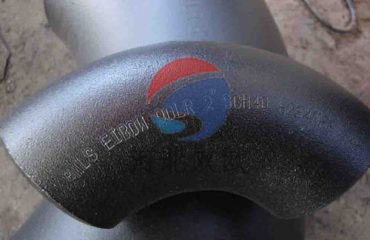
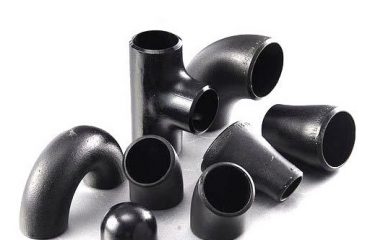
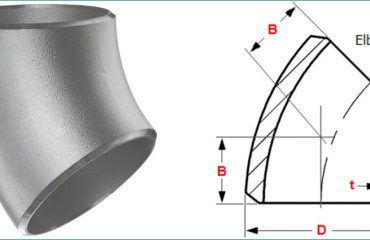
You must be logged in to post a comment.